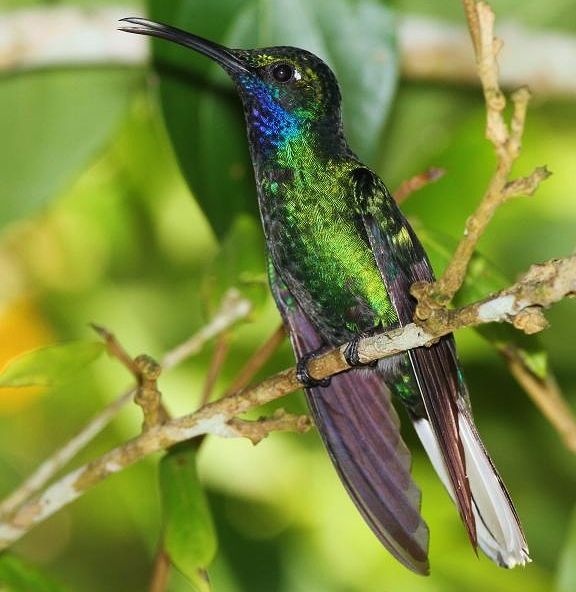 |
| Photo by Fayard Mohammed (Internet Bird Collection) |
Common name:
white-tailed sabrewing (en); asa-de-sabre-de-cauda-branca (pt); campyloptère á queue blache (fr); colibrí coliblanco (es); weißschwanz-degenflügel (de)
Taxonomy:
Order Apodiformes
Family Trochilidae
Range:
This species is found restricted to the Turimiquire Massif and Paria peninsula of north-eastern Venezuela and the Caribbean island of Tobago.
Size:
These birds are 12-13 cm long and weigh 10 g.
Habitat:
The white-tailed sabrewing is mostly found in mature, mountain rainforests, especially along the edges of forest clearings, but can also be found in lowland rainforests and in shade coffee and abandoned plantations. They occur at altitudes of 100-1.830 m.
Diet:
They mainly feed on the nectar of bromeliads, but will also hunt small ants, wasps and spiders.
Breeding:
White-tailed sabrewings can breed all year round, but especially in February-May. They are polygynous, with males displaying in a lek to attract females and mating with several females after which they have no further part in the breeding process. The female builds a small cup nest, where she lays 2 white eggs. She incubates the eggs for 16-19 days and raises the chicks until fledging. There is no information regarding the length of the fledgling period.
Conservation:
IUCN status – NT (Near-Threatened)
This species has a relatively small breeding range, but it is described as fairly common. The population is suspected to be declining slowly, as a result of habitat degradation, mostly through clearance for agriculture and pasture, repeated burning and understorey removal for coffee.







